Budapest's old Jewish Quarter has become the city's party district but it would be a mistake not to look beneath the surface of this culturally rich neighborhood.
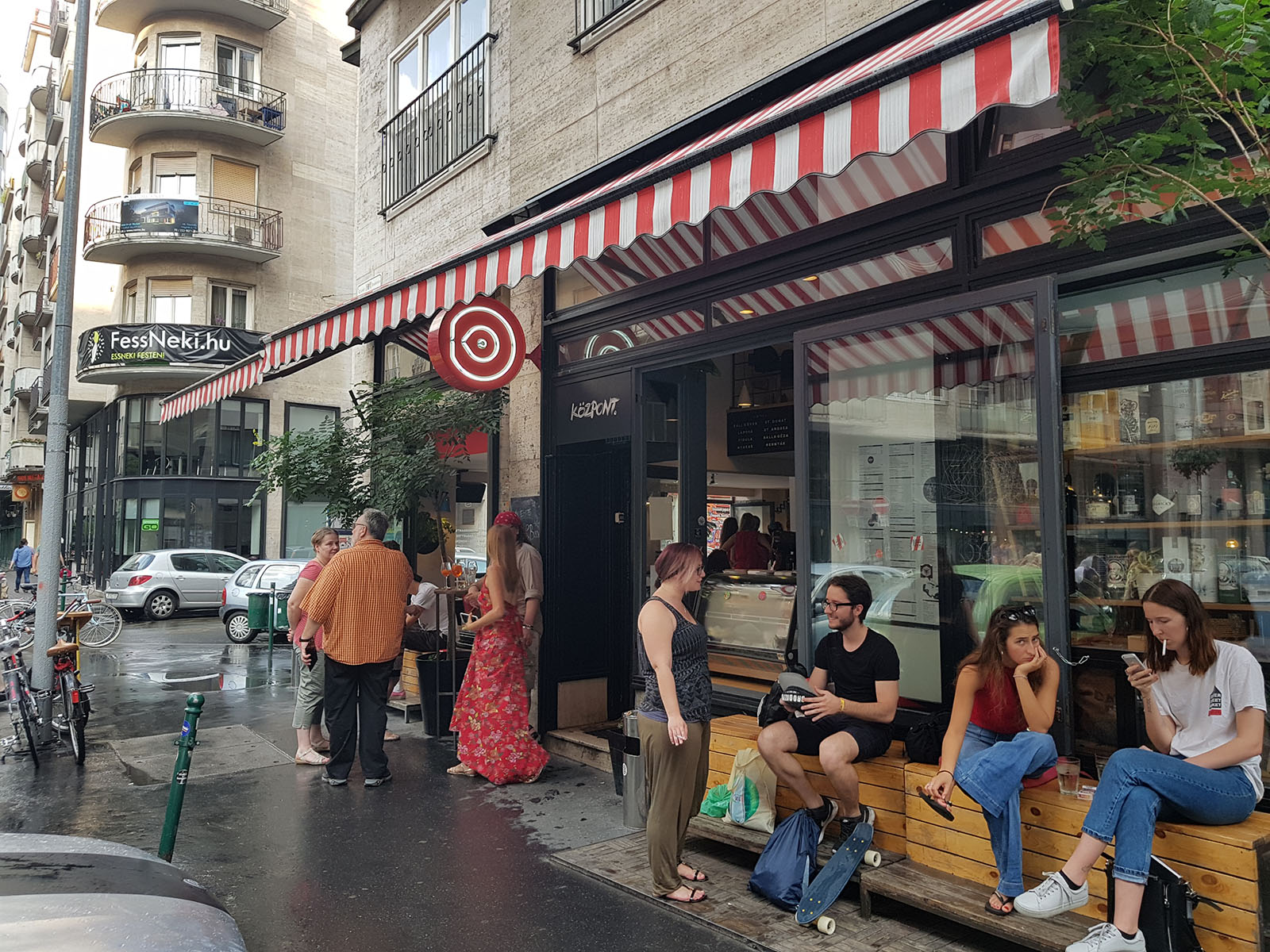
Use this map to find all places mentioned in the article below.
A little history
The Jewish Quarter is considered to be the inner part of Budapest's District 7 – the area enclosed by Király Street, Erzsébet körút, Dohány Street, Károly körút. It was here that Jewish people started settling in the late 18th century (the medieval Jewish Quarter on the Buda side was decimated during the battle between the European allied forces and the Ottomans in 1686). Budapest's rapid urbanization and economic development at the time presented plenty of business opportunities for Jews, drawing them in increasing numbers. They, in turn, participated in its progress.
By 1867, around the same time as in Western Europe, Jews in Hungary gained full civil rights. As a result, the Jewish population continued to rise and by 1910, more than 23 percent of Budapest’s population was Jewish (over 200,000 people). The Jewish Quarter became a buzzing neighborhood, teeming with retail stores, kosher restaurants, and three synagogues near one another.
The mutually beneficial relationship between Budapest Jews, most of whom were highly assimilated and thought of themselves as Hungarians, and Christians began to deteriorate after WWI and culminated in the tragic events of the Holocaust – in the winter of 1944, German and Hungarian Nazis turned the Jewish Quarter into a ghetto where thousands died of famine and starvation.
The ghetto's walls ran along today's Rumbach, Király, Kertész, and Dohány streets. In January 1945, the Soviet army liberated the ghetto and saved its residents from mass deportations (more information about Budapest's Jewish past and present.) There are several Holocaust memorials in the neighborhood today.
The Jewish Quarter declined during the Communist era (1947-1989) as residents moved out en masse or fled Hungary altogether. In the early aughts, reckless real estate developers did plenty of damage to the natural fiber of the neighborhood. Today, fewer Jewish people live here and most, but not all, signs of Jewish life have disappeared. The densely built streets and three beautiful synagogues, known as the "synagogue triangle," still stand as a reminder of the past.
The Dohány Street Synagogue is by far the best known and also the biggest in Europe; it's nearly empty throughout the year, but fills up for High Holiday services. The orthodox synagogue in Kazinczy Street has fewer than a hundred members, and the Rumbach Street Synagogue is no longer functional. The neighborhood has a few glatt kosher restaurants and Jewish-style places have started to appear thanks to the booming tourism.
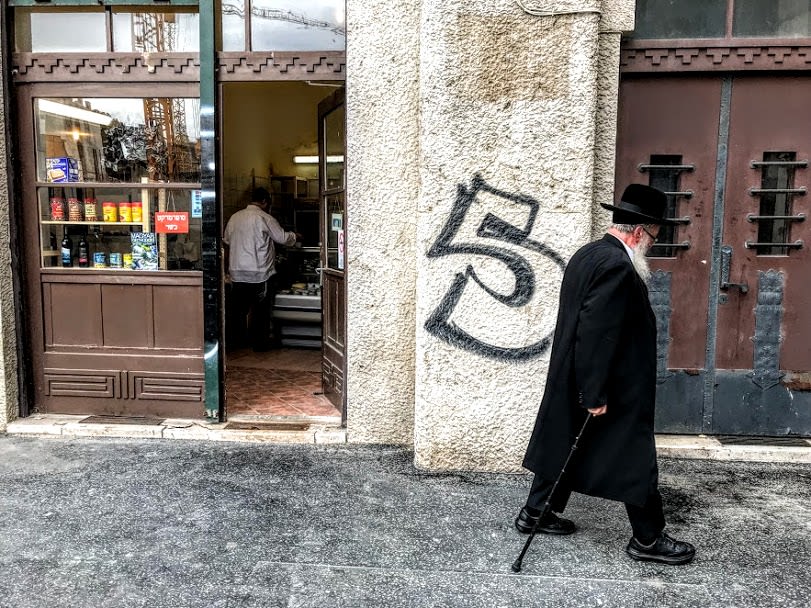
The Jewish Quarter today
The neglected streets and dilapidated buildings of the old Jewish Quarter are home to a revitalized Hungarian culture today, bristling with shops, bars, cafés, and restaurants. This neighborhood is also the cradle of ruin bars, these quirky drinking joints that started to mushroom inside the vast courtyards of vacant pre-war buildings and have since taken Budapest by storm (the most famous, Szimpla Kert, is also here).
Unfortunately, the Jewish Quarter is becoming a victim of its own success. Skyrocketing tourism is driving the prices up and the local residents away. New places are often absent of the spirit that made the neighborhood special. Nonetheless, this is still a unique area worth visiting, you just need to navigate the tourist-heavy streets with care. This primer is here to help.
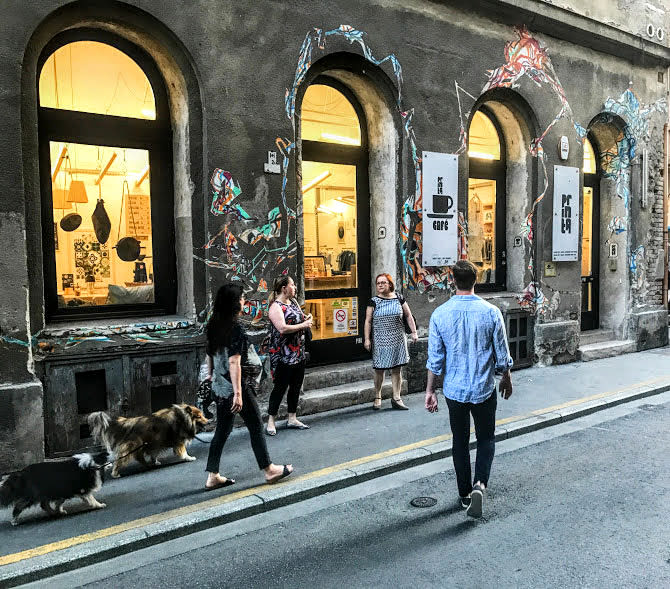
Downtown may have more Michelin-decorated restaurants, but the Jewish Quarter is giving it a run for its money with the diversity of its options. For example, within a few minutes from one another, you could have kosher cholent at Hanna, barbecued meat at Bp BARbq, Japanese food at Komachi, or old-school Hungarian fare at Frici Papa.
In addition, many of Budapest's hottest restaurants are also in the Jewish Quarter, including Gettó Gulyás, serving simple but tasty Hungarian stew dishes, Mazel Tov, an updated ruin bar, and DOBRUMBA, a chic Middle Eastern-themed restaurant. Know before you go that tourists account for most customers at these places because of the relatively high price points (still, they're cheaper than comparable spots in Western Europe).
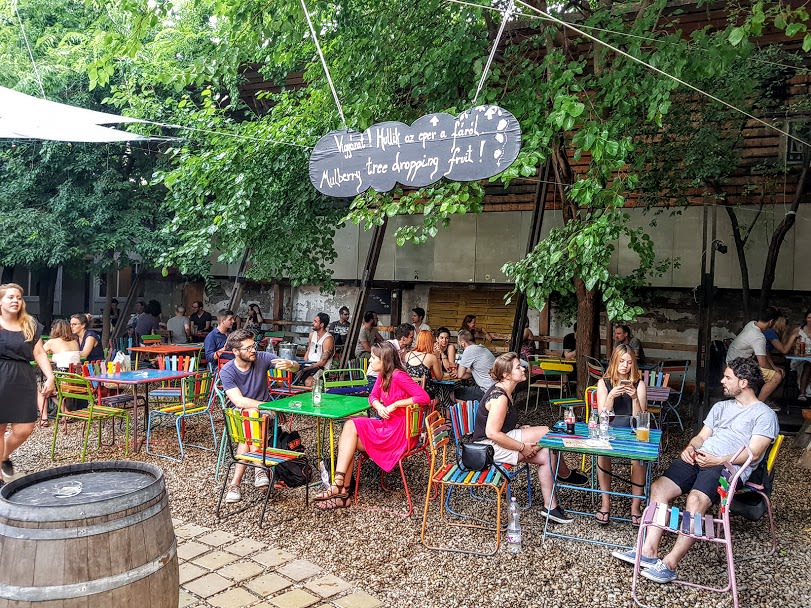
With almost every street lined with attractive-looking drinking joints, the Jewish Quarter's saturated bar scene can feel overwhelming at first. Kisüzem, exuding bohemian vibes, managed to retain a mainly local clientele and serves a broad selection of premium rums from the top shelf. Nappali Kávéház plays in a similar league, except it's stronger on the whiskey front and usually less crowded.
Központ and Telep are where Budapest's trendy hipsters hang out. Fekete kutya and Dzzs bars occupy the in-between territory: part bohemian, part hipster. In the outdooor season, you can enjoy low-priced drinks at Kőleves Kert under a canopy of trees. (Here's the full list of the best Budapest bars, many of which are in the Jewish Quarter.)
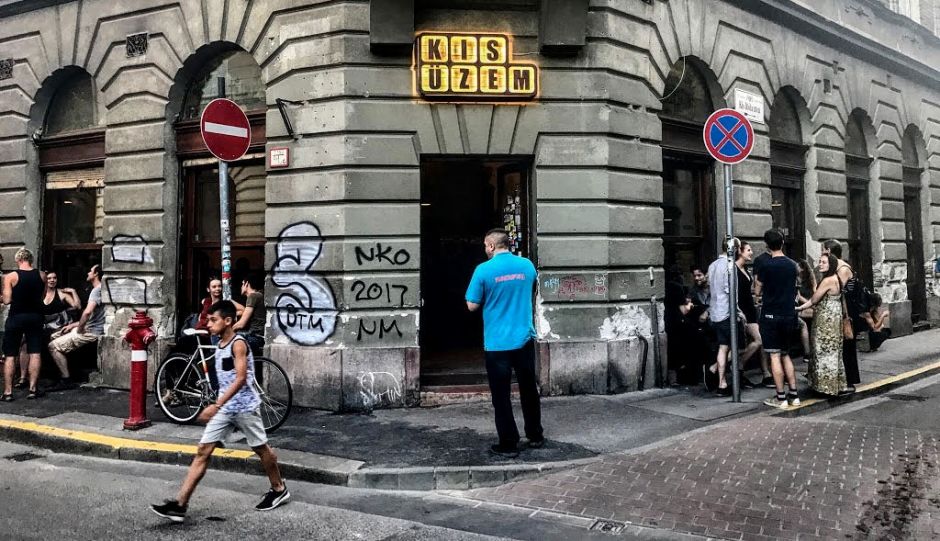
Ruin bars have become a tourist attraction and unfortunately they can bring out the worst of English stag party crews. Nonetheless, Szimpla Kert, despite packs of camera-wielding tourists, is still the best one and worth experiencing at least once.
Throngs of local teenagers and college students who've been priced out of the Jewish Quarter drink away happily for a fraction of the prices just blocks away at bare-bones bars along the Grand Boulevard (Erzsébet Körút). If you're curious, stop by 4es6os Wesselényi before you hit the Jewish Quarter.
When it comes to craft coffee, I often find it difficult to choose from the individual providers because they can be so similar in terms of decor and offerings. I usually end up at My Little Melbourne or Massolit, the latter doubling as a used bookstore. For craft beers, both Hops Beer Bar and Hopaholic have an incredible array of options and knowledgeable bartenders. If you're serious about your drink, be it a classic martini or a contemporary Penicillin cocktail, Boutiq Bar and Hotsy Totsy will not disappoint.
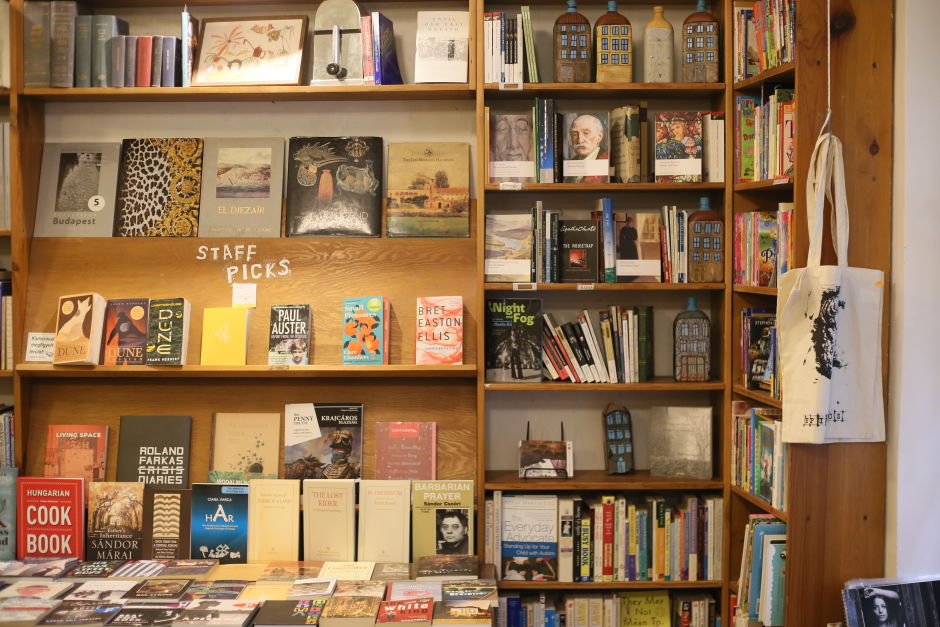
Gozsdu Udvar (Gozsdu Courtyard) consists of a long stretch of bars and restaurants right in the heart of the Jewish Quarter. You should proceed with caution as Gozsdu is another favored hangout of stag parties and it's the type of place where scantily clad hostesses and grouchy bouncers abound. But a few exceptions exist. 2 Spaghi Pasta Bar serves up tasty traditional Italian pastas in a fast casual setting. Spíler delivers everything you'd expect from a trendy bistro and doing it without outrageously high prices. Sáo is the go-to Asian fusion restaurant for the city's fashionable crowd.
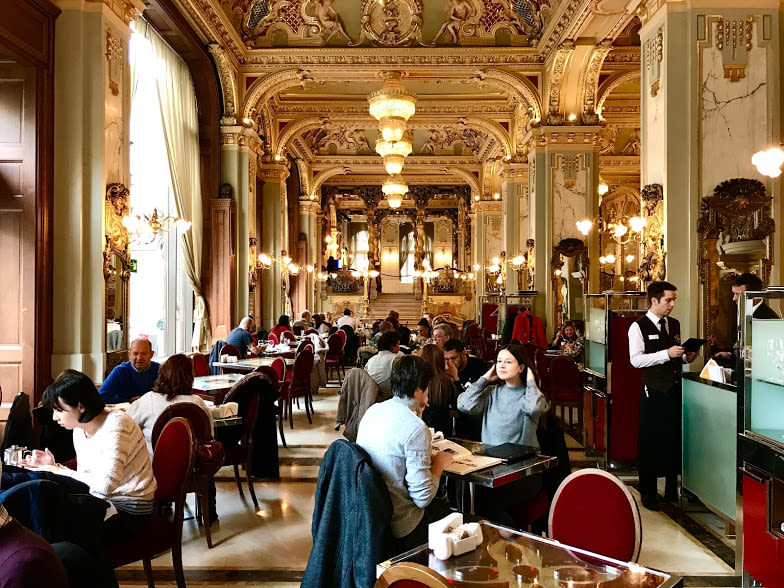
Just beyond the Jewish Quarter and dominating the Grand Boulevard (Nagykörút) is the New York Palace. This dramatic building is best known for the New York Café on its ground floor, a famous hangout of journalists and artists of yore. Today, instead of cigarette smoke and alcohol, tourists, sipping €8 cappuccinos and listening to live cabaret music, fill this ornate space complete with bronze statues and a frescoed ceiling.
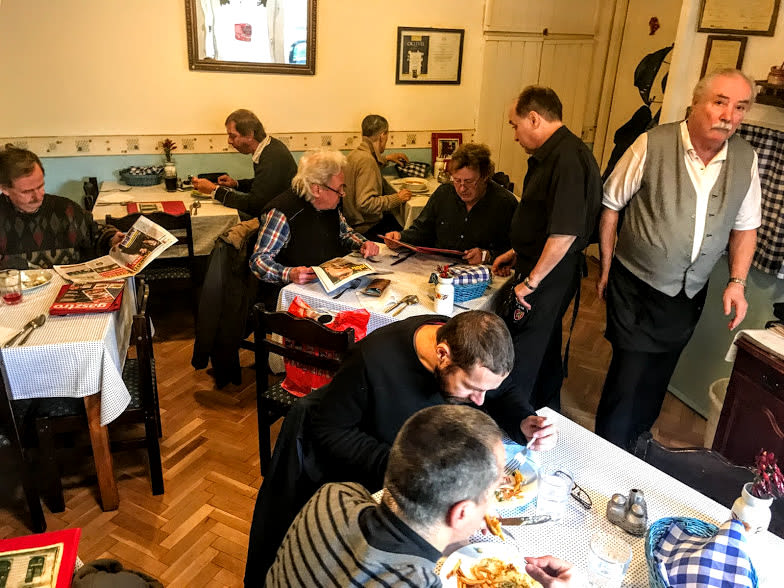
The outer part of District 7 beyond the Grand Boulevard is the opposite of the old Jewish Quarter – a sleepy, residential neighborhood. For a journey back in time, grab lunch at Kívánság Étkezde (don't sleep on the schnitzel-like mátrai borzaska).